
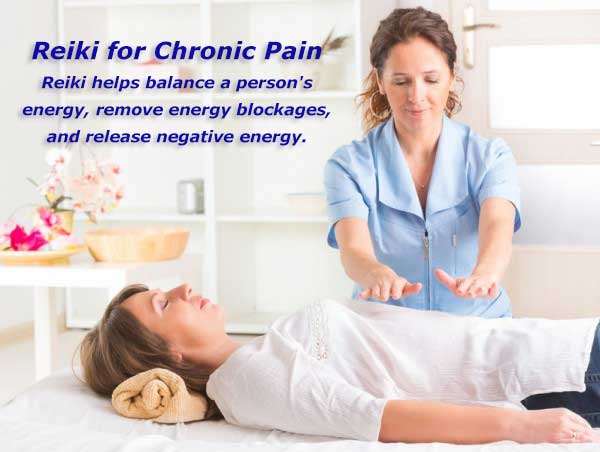 Energy therapies are based on the concept that disturbances in energy fields in and around the body result in illness, and that improving the flow and balance of energy can improve health and wellbeing (verywellhealth, 2018).
Energy therapies are based on the concept that disturbances in energy fields in and around the body result in illness, and that improving the flow and balance of energy can improve health and wellbeing (verywellhealth, 2018).
It is administered by "laying on hands" and is based on the idea that an unseen "life force energy" or Qi flows through us and is what causes us to be alive (Reiki.Org, 2019). During the session, the Reiki practitioner places their hands either above the person or lightly touching them to stimulate their body’s natural healing abilities. Reiki can help with improving a person’s spiritual wellbeing, along with helping heal physical and mental health conditions.
The word Reiki is made of two Japanese words. Rei means a higher intelligence that guides the functioning of the universe or "God's Wisdom or the Higher Power," and Ki is the nonphysical energy that flows through anything living (plants, animals, humans) known as "life force energy.” Together, these two words stand for “spiritually guided life-force energy.” Reiki is however not tied to a religion or part of a religious practice; it is not a belief or type of suggestion.
Wong, Cathy. (2018, March 19). verywellhealth/Reiki Therapy Health Benefits and Uses. Retrieved from: https://www.verywellhealth.com/what-is-reiki-89925
Reiki.Org/What is Reiki?/How Does Reiki Heal?. Retrieved from:
https://www.reiki.org/faq/whatisreiki.html
International Association of Reiki Professionals/What is Reiki?/History and Traditions of Reiki. Retrieved from: https://iarp.org/what-is-reiki/
Rooney, Ann Marie. Mbglifestyle/So You Want To Learn Reiki? Read This First.
https://www.mindbodygreen.com/articles/what-is-reiki-and-how-does-it-work
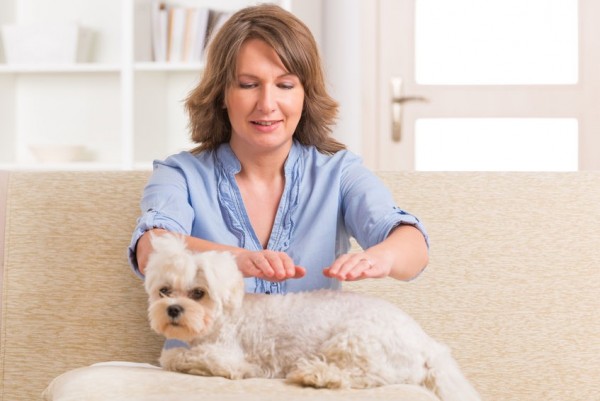 Reiki aids in helping the body with its own natural healing processes. It is not supposed to be a treatment solution for any disease or chronic illness. But, it can help with a reduction in pain, faster recovery, and often improving a person’s mental, spiritual, and emotional state. Reiki will balance a person’s energy and help get rid of trapped emotions. It also helps with deep relaxation, and improving a person’s overall wellbeing. Reiki can have different benefits for everyone, and every person may have different experiences based on their needs.
Reiki aids in helping the body with its own natural healing processes. It is not supposed to be a treatment solution for any disease or chronic illness. But, it can help with a reduction in pain, faster recovery, and often improving a person’s mental, spiritual, and emotional state. Reiki will balance a person’s energy and help get rid of trapped emotions. It also helps with deep relaxation, and improving a person’s overall wellbeing. Reiki can have different benefits for everyone, and every person may have different experiences based on their needs.
According to practitioners, energy can stagnate in the body where there has been physical injury or possibly emotional pain (MedicalNewsToday, 2017). These types of situations can lead to illness.
It could potentially help with any health condition, but some of the more common health conditions Reiki has been used for include AIDS, Anxiety, Arthritis, Asthma, Autism, Cancer, Crohn’s Disease, Chronic Pain, Chronic Stress, Depression, Diabetes, Fatigue, Fibromyalgia, Infertility, Insomnia, Menopause, Migraines, Nausea, Neurodegenerative Disorders, and Sciatica.
Helps Cancer Patients
Many cancer patients report feeling deeply relaxed, more capable in handling complicated situations, or less stressed after receiving Reiki treatment. Some people have even stated that the Reiki helps them to control side effects from chemotherapy like anxiety, pain, and sickness.
Joelle Peterson Reiki Master with Golden Spark Healing and Pathways of Light, tried Reiki for the first time after a concussion. She still had not felt right even after recovering from the main symptoms. After receiving Reiki, she immediately noticed a change, and all of her lasting symptoms faded away. She has also seen great results from a sinus infection where the Reiki helped to clear out all the symptoms.
Peterson, Joelle. (2019, May 23). Golden Spark Healing and Pathways of Light. Personal Interview. https://www.goldensparkhealing.com/
Noss MS RD, Susan. ManitouWellness/7 Health Benefits of Reiki. Retrieved from:
http://www.manitouwellness.com/what-we-do/7-health-benefits-of-reiki/
Newman, Tim. (2017, September 6). MedicalNewsToday/Everything you need to know about reiki. Retrieved from: https://www.medicalnewstoday.com/articles/308772.php
Wong, Cathy. (2018, March 19). verywellhealth/Reiki Therapy Health Benefits and Uses. Retrieved from: https://www.verywellhealth.com/what-is-reiki-89925
Cronkleton, Emily. (2018, June 21). healthline/What Are the Benefits of Reiki and How Does It Work?. Retrieved from: https://www.healthline.com/health/reiki#7
CANCER RESEARCH UK/Reiki. Retrived from: https://www.cancerresearchuk.org/about-cancer/cancer-in-general/treatment/complementary-alternative-therapies/individual-therapies/reiki
Reiki.Org/What is Reiki?/How Does Reiki Heal?. Retrieved from:
https://www.reiki.org/faq/whatisreiki.html
Palermo, Elizabeth. (2015, February 18). LIVESCIENCE/What is Reiki?. Retrieved from:
It can help with managing symptoms of an illness or disease as a complementary treatment. It is not a primary treatment to cure any illness or disease. If energy in the body is low, weak, or blocked this can contribute to: emotional, mental, and physical health problems; sickness, stress, and so on. Reiki balances the flow of subtle energy, releasing trapped energy.
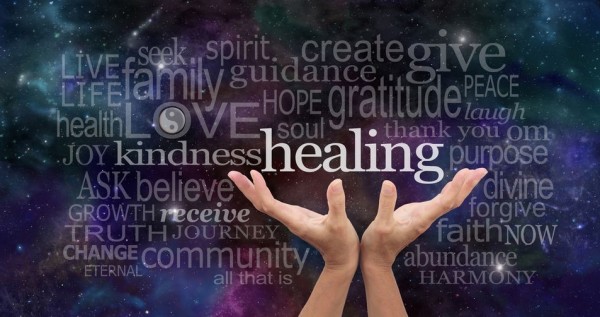 Other Benefits
Other Benefits
Although people may all have different Reiki experiences, here are some of the common benefits people receive from Reiki:
- Promotes relaxation
- Improves body’s natural healing processes (may help reduce symptoms)
- Speed up recovery from surgery or long-term illness
- Reduce side effects from medicines or treatments (especially with chemo-therapy patients)
- May prevent some health issues
- Assists the body in clearing out toxins
- Improves emotional, mental and spiritual well-being (balances mind and emotions such as fear, frustration, and anger)
- Balances mental health: enhancing learning, memory, and mental clarity
- Help heal emotional wounds
- Relief from emotional distress or sorrow when going through the grieving process
- Reduces stress
- Helps people to feel more at peace, or in harmony
- Allows greater capacity for empathy and love
- Improves self-confidence
- Helps cope with challenging life scenarios
- Improves sleep, making it easier
Reiki.Org/What is Reiki?/How Does Reiki Heal?. Retrieved from:
https://www.reiki.org/faq/whatisreiki.html
International Association of Reiki Professionals/What is Reiki?/History and Traditions of Reiki. Retrieved from: https://iarp.org/what-is-reiki/
Wong, Cathy. (2018, March 19). verywellhealth/Reiki Therapy Health Benefits and Uses. Retrieved from: https://www.verywellhealth.com/what-is-reiki-89925
Noss MS RD, Susan. ManitouWellness/7 Health Benefits of Reiki. Retrieved from:
http://www.manitouwellness.com/what-we-do/7-health-benefits-of-reiki/
Cronkleton, Emily. (2018, June 21). healthline/What Are the Benefits of Reiki and How Does It Work?. Retrieved from: https://www.healthline.com/health/reiki#7
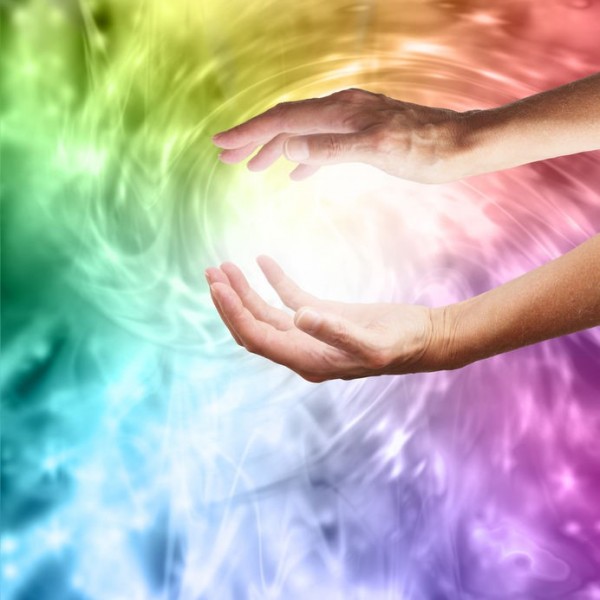 It is Not a Religious Practice
It is Not a Religious Practice
Anyone can become a Reiki practitioner, you don’t have to believe in anything to learn and use it. Some people may see it as a religious experience, although it is a spiritual practice, it is not a religious practice. It can make sense, no matter what religion you believe in or don’t believe in. Even if you don’t believe in it, it will still work on you. What type of experience you have will depend on what your body needs, how open you are, and the experience of the Reiki practitioner.
At the root of Reiki is the concept — once known in Western medicine up through the Middle Ages and still seen today in Eastern medicine — that disease is caused by imbalances of vital energy in the body and that correcting these imbalances promotes healing, according to UMN's Center for Spirituality & Healing (LIVESCIENCE, 2015).
How Reiki Works
Many people are confused by the concept of Reiki, and find it difficult to understand, but it is also rather difficult to explain. Reiki helps with the flow of energy very similar to how Acupuncture helps speed up healing, lowers pain, improves relaxation and reduces other symptoms.
While lying down on a massage table with your eyes closed, the Reiki practitioner will place their hands in various positions across your whole body. Usually there will be some relaxing music playing in the background, and you will be told to just close your eyes and relax. The Reiki energy will flow from the practitioner’s hands to your body either while placed slightly above you, or through light touches. Reiki energy is transmitted through the Reiki practitioner from a universal energy source. This process will increase the flow of energy in your body, fixing blockages, or may remove negative energy from your body. However, there is no real explanation of how the energy flows from one person to another. One thought is the transfer of electromagnetic energy, and another theory is just promoting relaxation, which lowers stress to promote healing. However, really experienced Reiki practitioners can actually send healing to a person without being anywhere near them, this is known as “distant healing.”
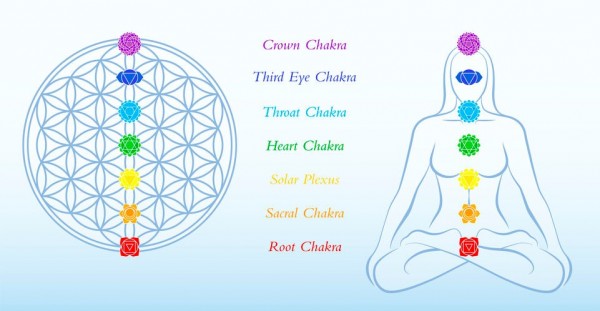 Another explanation is the biofield. Reiki is one of several therapies based on the biofield, or a type of energy field that “regulates everything from our cellular function to our nervous system,” says Shamini Jain, assistant professor of psychiatry at the University of California–San Diego (U.S. News: Health, 2014). It is possible to measure electromagnetic energy of a biofield, but reiki is harder to measure as a part of the biofield. Our life force energy flows through the energy system made up of “energy bodies” which encompass the physical body and help in processing emotions and thoughts. The energy bodies have energy centers called chakras, which work somewhat like valves that allow life force to circulate through the physical, mental, emotional and spiritual bodies (Reiki.Org, 2019). Chakras are actually used in both Acupuncture and Ayurveda Medicine, and both share the concept of five elements with the same colors for each chakra and element. Find out more here. Then, there are also energy meridians that flow like a river through the body carrying life force energy and assisting in balancing the body’s function and various systems.
Another explanation is the biofield. Reiki is one of several therapies based on the biofield, or a type of energy field that “regulates everything from our cellular function to our nervous system,” says Shamini Jain, assistant professor of psychiatry at the University of California–San Diego (U.S. News: Health, 2014). It is possible to measure electromagnetic energy of a biofield, but reiki is harder to measure as a part of the biofield. Our life force energy flows through the energy system made up of “energy bodies” which encompass the physical body and help in processing emotions and thoughts. The energy bodies have energy centers called chakras, which work somewhat like valves that allow life force to circulate through the physical, mental, emotional and spiritual bodies (Reiki.Org, 2019). Chakras are actually used in both Acupuncture and Ayurveda Medicine, and both share the concept of five elements with the same colors for each chakra and element. Find out more here. Then, there are also energy meridians that flow like a river through the body carrying life force energy and assisting in balancing the body’s function and various systems.
The existence of 'life force energy' and the necessity for it to flow freely in and around one's body to maintain health has been studied and acknowledged by health care practitioners as well as scientists (Reiki.Org, 2019). Chinese Medicine (Acupuncture), Indian Medicine (Ayurveda), and Japanese Medicine (Reiki), and in America (Muscle Testing) all work with the body’s energy in helping a person to heal. A person may actually become more aware of energies in their body with meditation, exercise, or even an improved diet.
Reiki Restores Energy by Fixing Unreleased Stress
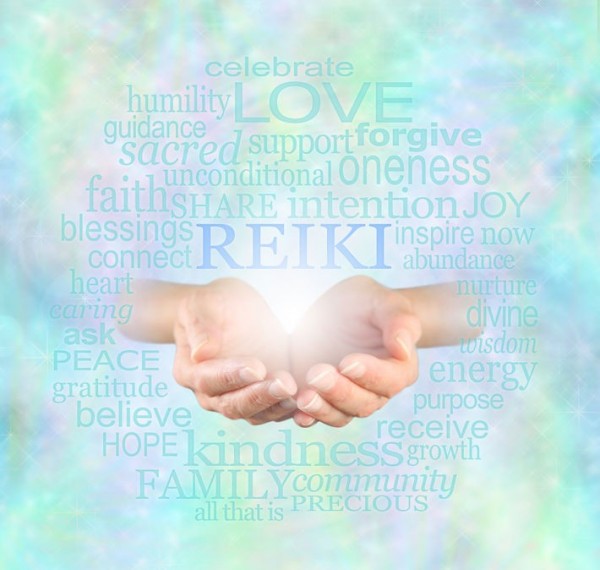 Stress from conflicting thoughts and feelings (fear, doubt, worry, anger, anxiety) can get stuck in your energy system. Medical research has determined that continual stress can block the body's natural ability to repair, regenerate and protect itself (Reiki.Org, 2019). The American Institute of Stress estimates that 75%-95% of all visits to doctors are the results of reaction to stress (Reiki.Org, 2019). When stress is unreleased it can cause minor health issues like aches and pains to major health issues like heart disease. Reiki clears trapped energy bodies opening blocked meridians and chakras. It rebalances energy and vitality removing the emotional and physical effects of unreleased stress.
Stress from conflicting thoughts and feelings (fear, doubt, worry, anger, anxiety) can get stuck in your energy system. Medical research has determined that continual stress can block the body's natural ability to repair, regenerate and protect itself (Reiki.Org, 2019). The American Institute of Stress estimates that 75%-95% of all visits to doctors are the results of reaction to stress (Reiki.Org, 2019). When stress is unreleased it can cause minor health issues like aches and pains to major health issues like heart disease. Reiki clears trapped energy bodies opening blocked meridians and chakras. It rebalances energy and vitality removing the emotional and physical effects of unreleased stress.
The Experience: How Do You Know the Reiki is Working?
View Jory Pradjinski's, Founder of Hope Instilled, experience with Reiki
A reiki experience can be completely different for different people, some people may have a dramatic, positive experience, for others the experience may be very subtle. Experiences range from feeling a heat from practitioner’s hands, to subtle waves of pulsations across the body where the practitioner’s hands are, radiating energy to just feelings of relaxation. Many people describe going into a meditative state between consciousness and sleeplike state, almost falling asleep. But, Reiki is not meditation. Often people don’t notice much the first time they try reiki, but have deeper experiences as they continue to go. Sometimes changes are noticed later in the day such as feeling more at ease with life, less worried, improved digestion, and deeper sleep.
Reiki.Org/What is Reiki?/How Does Reiki Heal?. Retrieved from:
https://www.reiki.org/faq/whatisreiki.html
Palermo, Elizabeth. (2015, February 18). LIVESCIENCE/What is Reiki?. Retrieved from:
https://www.livescience.com/40275-reiki.html
Miller, Anna Medaris. (2014, November 10). U.S. News: Health/What is Reiki?. Retrieved from:
https://health.usnews.com/health-news/health-wellness/articles/2014/11/10/what-is-reiki
Cronkleton, Emily. (2018, June 21). healthline/What Are the Benefits of Reiki and How Does It Work?. Retrieved from: https://www.healthline.com/health/reiki#7
Miles, Pamela. UNIVERSITY OF MINNESOTA: TAKING CHARGE of your HEALTH & WELLBEING/What Does the Research Say about Reiki?/What Can I Expect in a Typical Reiki Session. Retrieved from: https://www.takingcharge.csh.umn.edu/explore-healing-practices/reiki/what-does-research-say-about-reiki
International Association of Reiki Professionals/What is Reiki?/History and Traditions of Reiki. Retrieved from: https://iarp.org/what-is-reiki/
Newman, Tim. (2017, September 6). MedicalNewsToday/Everything you need to know about reiki. Retrieved from:
The reiki practitioner either has their hands placed over you or lightly touching you, they are not massaging or manipulating any part of the body. Therefore, it will not cause any physical side effects. If you have an injury that is sensitive to touch, just let the practitioner know ahead of time. Reiki should not be used as a primary treatment for any health condition, especially a serious health problem. It is not a substitute for conventional medicine.
Miller, Anna Medaris. (2014, November 10). U.S. News: Health/What is Reiki?. Retrieved from:
https://health.usnews.com/health-news/health-wellness/articles/2014/11/10/what-is-reiki
Palermo, Elizabeth. (2015, February 18). LIVESCIENCE/What is Reiki?. Retrieved from:
It doesn’t alter the body’s chemical composition the way modern medicine does. Many people criticize it as having a placebo effect.
It is possible to measure the impact though without demonstrating the existence of the biofield. Interestingly, aspirin was used for 70 years before science began to understand how it works.
Here are some studies that represent Reiki’s benefits:
Improved Mood and Heart Rate Variability
In 2010, Yale University researchers found that heart attack patients receiving 20-minute reiki treatment three days after their attack, showed improved moods and heart rate variability. This study has been published in the Journal of the America College of Cardiology.
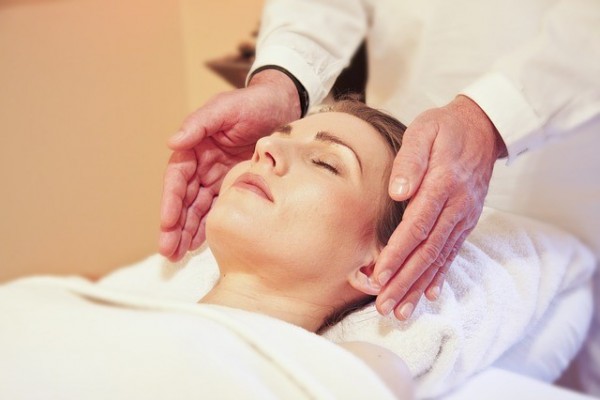 Reductions in Fatigue with Improved Cortisol Levels
Reductions in Fatigue with Improved Cortisol Levels
Another 2012 study in the journal Cancer found that fatigued breast cancer survivors who received four weeks of biofield healing therapies showed “highly clinically significant” reductions in fatigue, says Jain, who led the study (U.S. News: Health, 2014). The patients receiving a placebo effect also showed improvements, but not as much. Both groups showed greater improvement than the ones who received no treatment at all. The biofield healing improved cortisol levels, where the fake and no treatments did not.
Cancer Patients: Lower Levels of Pain, Anxiety and Fatigue
A study done in 2015, showed lower levels of pain, fatigue and anxiety for cancer patients who received reiki with regular medical care. These levels were significantly lower than the control group, who only received medical care (healthline, 2018). Each cancer patient received 30 minutes of distant reiki over the course of five days.
Cesarean Delivery: Reduced Anxiety, Pain, and Breathing Rate
A 2015 study, showed just 1-2 days after a group of women had cesarean deliveries, they saw improvements from Reiki treatments. The need for analgesic pain killers was less, along with anxiety and pain, plus improved breathing. The study was published on Pain Management Nursing.
Improving Depression, Pain and Anxiety
With a small study done in 2010 on older adults, Reiki improved physical symptoms, mood and wellbeing for people experiencing depression, pain, and anxiety. Results also showed improvements in self-care along with increased curiosity. This was published in Research in Gerontological Nursing.
Integrative Reiki for Cancer Patients: A Program Evaluation
In this study, the 213 cancer participants all had more than a 50% decrease in distress, anxiety, depression, pain, and fatigue. Of that group, 176 liked the Reiki and found it helpful, 157 plan to continue using it, and 175 would recommend it to other people. They saw overall improvement in relaxation and spiritual well-being. View study on PubMed.gov
More studies can be found at PubMed.gov
Miles, Pamela. UNIVERSITY OF MINNESOTA: TAKING CHARGE of your HEALTH & WELLBEING/What Does the Research Say about Reiki?/What Can I Expect in a Typical Reiki Session. Retrieved from: https://www.takingcharge.csh.umn.edu/explore-healing-practices/reiki/what-does-research-say-about-reiki
Miller, Anna Medaris. (2014, November 10). U.S. News: Health/What is Reiki?. Retrieved from:
https://health.usnews.com/health-news/health-wellness/articles/2014/11/10/what-is-reiki
Cronkleton, Emily. (2018, June 21). healthline/What Are the Benefits of Reiki and How Does It Work?. Retrieved from: https://www.healthline.com/health/reiki#7
Newman, Tim. (2017, September 6). MedicalNewsToday/Everything you need to know about reiki. Retrieved from:
https://www.medicalnewstoday.com/articles/308772.php
Palermo, Elizabeth. (2015, February 18). LIVESCIENCE/What is Reiki?. Retrieved from: https://www.livescience.com/40275-reiki.html
Reiki practitioners shouldn’t be bashing modern medicine, and should be practicing reiki on themselves almost every day. Reiki practitioners also have to practice meditation. Reiki doesn’t require any special degree or past experience to learn it. Anyone can learn Reiki, but they must learn it through a Reiki Master.
There are 3 Levels of Reiki Practitioners:
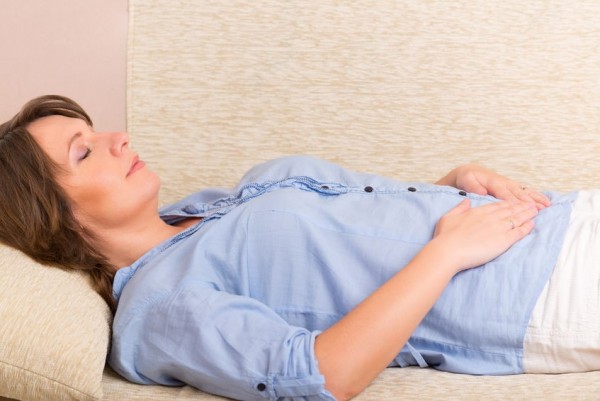 Level 1: Learning the Usui Tibetan System
Level 1: Learning the Usui Tibetan System
This is typically a 2-day seminar or 100 hours of classroom time, depending on where a person receives their training. At Level 1 a person can treat themselves with Reiki, family and friends, but cannot charge people as a practitioner. Students learn about the eight different energy zones in the human body, hand placements, history, how to use it on others, and themselves. It is very important they practice Reiki on themselves regularly.
At Level 1, the student has an initiation also called attunement where they receive the flow of Reiki energy from the Universal Energy permanently. It is an unlimited supply of “life force energy.” Reiki cannot be practiced without this attunement. The attunement opens up the heart, crown and palm chakras, and energy is aligned with the universe. They will usually feel the energy flowing in their hands. Any energy blockages the student has are released, and energies throughout all the chakras are balanced. The more a student uses reiki the more constant the energy becomes.
Level 2: Practitioner Level
Students must wait at least three months from learning Level 1 and practicing before moving on to Level 2. At this level they can treat people other than friends and family, and charge money for their service and time. Training goes through anatomy, kinesiology, and psychology. Meditation is a huge part of the training, as well. At this level, students practice on each other and can practice on others.
In the second degree Reiki initiation, the central channel is opened up to a greater level, and the amount of energy that can be channeled increases (Reiki – A natural method of Healing). The student then receives three helpful symbols. The Power Symbol is for increasing the amount of energy channeled. The Mental Symbol allows the practitioner to work on mental and emotional energy. Lastly, the Distance Symbol allows healing to be sent at a distance, no matter where a person is physically in the world.
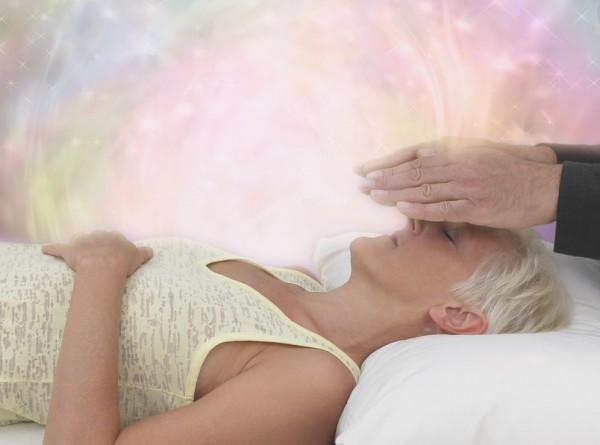 Level 3: Becoming a Reiki Master and Teacher
Level 3: Becoming a Reiki Master and Teacher
This is typically at least six months to a year after learning Level 2. This can only be obtained after gaining enough experience and working personally with a Reiki Master. A core principle of Reiki is that only a Reiki Master can teach Reiki to future practitioners. There are two levels to this:
Inner Master Level: At this level a person can channel even more universal energy, and they receive the Usui Master Symbol that allows them to work on a spiritual level. This helps them to find their inner truth, finding their true purpose in life with the realization that they determine their own destiny.
Usui Tibetan Master Level: Even more Universal Energy is received and Tibetan Master Symbols are provided. The person then learns how to do Reiki initiations. At this master level, the person will teach Reiki to others providing them with the Universal Energy. The definition of a Reiki master is anyone who has received the master attunement and master symbol, understands how to give all the attunements, and has actually taught a Reiki class, thus demonstrating their ability to pass Reiki on to others (mbglifestyle). Otherwise, they are just third degree Reiki practitioners.
Holy Fire Reiki
Another form of Reiki people can learn that is even more powerful is called “Holy Fire Reiki,” and it has its own three levels of training. This training is separate from the Usui Tibetan system. It is a rather new form of Reiki that was just introduced in January of 2014. It comes from a higher level of consciousness and is known to last for a longer period of time and have greater benefits. The word “holy” means whole or complete, it is not intended to have any religious meaning. View more information on Holy Fire Reiki at Reiki.Org.
Some of the results of receiving Holy Fire Reiki are:
- Releases worry and replaces it with a sense of safety in a most pronounced way.
- Heals deeply and quickly without distress.
- Brings about a feeling of being loved, this is a deep and refined nurturing.
- Fosters feelings of fullness, strength, love of self and others, confidence, vitality, joy, and peace.
- Once received, the benefits of Holy Fire Reiki continue to stay with you for a prolonged period of time.
(Golden Spark Healing, 2019)
Joelle Peterson Reiki Master with Golden Spark Healing and Pathways of Light, started out by learning the Usui Tibetan System of Reiki and did Levels 1, 2 & 3. Then later she decided to obtain the Holy Fire Reiki, so she did levels 1, 2, & 3 in Holy Fire Reiki. She quickly noticed the Holy Fire Reiki was much more powerful. Just by thinking about the Holy Fire Reiki, often her hands or heart center will heat up. The Holy Fire Reiki is easily turned on, where the other form of Reiki required a bit more effort to access the Universal Energy. Joelle was impressed by the power of the Holy Fire Reiki, that’s why she became a Holy Fire Reiki Master and continuously uses it to help others to heal.
Finding a Qualified Practitioner
A well-qualified Reiki practitioner will obviously need at least a Level 2 qualification. However, many people will continue to take various Reiki classes throughout their lifetime.
There are no state regulations, no professional standards, or any legal requirements for Reiki practitioners. So it is important to find out a practitioner’s experience, if they have the proper training from a Reiki Master, or have certifications or professional memberships. The International Association of Reiki Practitioners offers professional membership, and The Reiki Licensing Commission for Reiki Masters and Healers awards designations. Reiki sessions are usually not covered by insurance.
How to Search for a Practitioner
Reiki is often used in medical settings such as hospitals, hospice, and medical care centers as a complement to traditional medicine. It can also be found at holistic health care centers, university wellness centers, and workplace wellness programs. You might also be able to find an Independent Reiki Healer.
Here are some search directories for finding Reiki Practitioners:
The International Center for Reiki Training
International Association of Reiki Professionals
In the UK, they should be registered as a Reiki practitioner with the Complementary and Natural Healthcare Council (CNHC).
Peterson, Joelle. (2019, May 23). Golden Spark Healing and Pathways of Light. Personal Interview. https://www.goldensparkhealing.com/
Dr. Crook, Graham. Reiki – A natural method of Healing/Levels of Reiki. Retrieved from:
http://www.reikiworld.net/Reiki/Levels_of_Reiki.htm
CANCER RESEARCH UK/Reiki. Retrived from:
Rooney, Ann Marie. Mbglifestyle/So You Want To Learn Reiki? Read This First.
https://www.mindbodygreen.com/articles/what-is-reiki-and-how-does-it-work
Study.com/Reiki Master Healing Training Programs and Career Info. Retrieved from:
https://study.com/articles/Reiki_Master_Healing_Training_Programs_and_Career_Info.html
Newman, Tim. (2017, September 6). MedicalNewsToday/Everything you need to know about reiki. Retrieved from: https://www.medicalnewstoday.com/articles/308772.php
Miller, Anna Medaris. (2014, November 10). U.S. News: Health/What is Reiki?. Retrieved from:
https://health.usnews.com/health-news/health-wellness/articles/2014/11/10/what-is-reiki
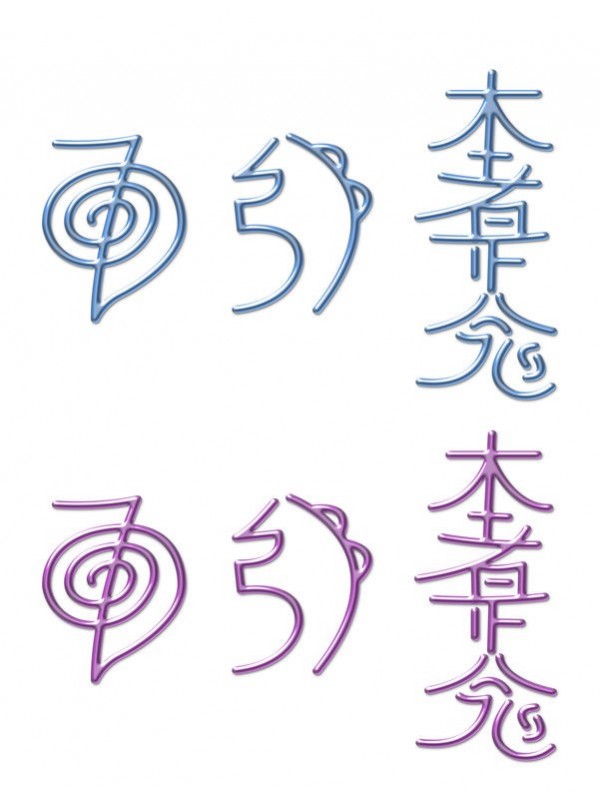 Growing up he always had an interest in medicine, psychology and theology. He wanted to find a method for healing that would be available for anyone with no ties to any religious beliefs. He studied all different types of healing systems before becoming a priest/monk living at a monastery.
Growing up he always had an interest in medicine, psychology and theology. He wanted to find a method for healing that would be available for anyone with no ties to any religious beliefs. He studied all different types of healing systems before becoming a priest/monk living at a monastery.
Sometime during his years of training in the monastery, Dr. Usui attended his own training rediscovery course in a cave on Mount Kurama (International Association of Reiki Professionals). He meditated, prayed, and fasted for 21 days, until a life changing event happened. Usui saw the Sanskrit symbols that would help him develop a system of healing. It is also said, on the morning of the 21st day he was about to give up and leave, then a powerful spiritual energy came down into the top of his head and he became enlightened.
Usui created the first healing clinic for Reiki in Kyoto. The first school for Reiki was established in 1922. Dr. Usui trained several Reiki masters before he died. Dr. Chujiro Hayashi was one of them, who is known for creating more hand positions and improving the attunement process.
Reiki Comes to America
Dr. Hayashi trained more Reiki Masters, after improving Reiki, including Hawayo Takata a Japanese-American woman. She had received Reiki healing from Dr. Hayashi after being told she needed surgery for tumor, gallstones, and appendicitis. After receiving weekly treatments from Dr. Hayashi, her health greatly improved and she decided she needed to learn Reiki. After Takata learned Reiki, she brought it back with her to the United States spreading it across Hawaii. Takata passed her Reiki teachings onto 22 Reki masters before her death in 1980. The 22 Reiki masters spread it throughout the west. In the 1980’s it also moved into Europe.
International Association of Reiki Professionals/What is Reiki?/History and Traditions of Reiki. Retrieved from: https://iarp.org/what-is-reiki/
Reiki.Org/What is Reiki?/How Does Reiki Heal?. Retrieved from:
https://www.reiki.org/faq/whatisreiki.html
Palermo, Elizabeth. (2015, February 18). LIVESCIENCE/What is Reiki?. Retrieved from:
https://www.livescience.com/40275-reiki.html
Cronkleton, Emily. (2018, June 21). healthline/What Are the Benefits of Reiki and How Does It Work?. Retrieved from: https://www.healthline.com/health/reiki#7
The Thirsty Soul/History of Reiki. Retrieved from:
He incorporated some of the Ideals mirroring the five principles of the Meiji emperor of Japan. The purpose of the Ideals is to help people realize that in order for Reiki to have lasting results, a person must actively work toward continuously improving oneself. They must take an active part in their own healing.
Mikao Usui’s Ideals
The secret art of inviting happiness
The miraculous medicine of all diseases
Just for today, do not anger
Do not worry and be filled with gratitude
Devote yourself to your work. Be kind to people.
Every morning and evening, join your hands in prayer.
Pray these words to your heart
and chant these words with your mouth
(reiki.org)
Reiki.Org/What is Reiki?/How Does Reiki Heal?. Retrieved from:
How long is it? Where does it take place?
A Reiki session can be anywhere from 20 - 90 minutes long, though most Reiki sessions will typically be around 30 – 60 minutes. A typical recommendation for how many Reiki sessions to try is four, at that point you can evaluate whether you want more or not. There is no such thing as too much Reiki, your body will take in what it needs just like breathing. Reiki can actually be done anywhere, but a professional reiki practitioner will usually have a private, cozy and quiet space for reiki treatments.
Before Getting Started
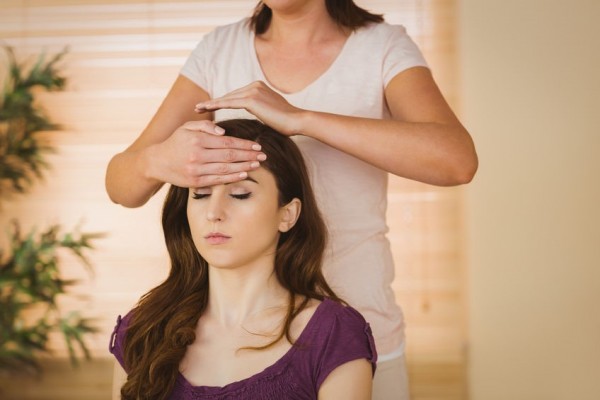 Before the Reiki practitioner gets started, they will usually ask if there are any specific problems or issues you want them to focus on, and what you are hoping to obtain from the session. There isn’t a full on health interview like you would typically receive with most alternative treatments. There is usually no paperwork, and you are not required to share anything. It’s also okay if you don’t have any specific goals the Reiki session will still benefit you.
Before the Reiki practitioner gets started, they will usually ask if there are any specific problems or issues you want them to focus on, and what you are hoping to obtain from the session. There isn’t a full on health interview like you would typically receive with most alternative treatments. There is usually no paperwork, and you are not required to share anything. It’s also okay if you don’t have any specific goals the Reiki session will still benefit you.
The Actual Reiki Session
You will lay comfortably on a massage table, face up. The practitioner will recommend closing your eyes to help with relaxation. Unlike a massage, no clothing is removed. Typically, some very calming music will be playing in the background. While receiving Reiki, you are not required to do anything. If you need to adjust your body you can. You can choose to daydream, focus on your breath, or the sensations associated with the Reiki.
The practitioner will place their hands in various positions slightly above your body, or lightly on your body. You must let the practitioner know if you don’t want to be touched. If you have a certain injury, they can hold their hands above that part of the body, as well. The reiki practitioner will either start at the top of the head or closer to the feet and do specific hand placements moving up the body or down the body. There are over 20 different parts of the body the hands can be placed to improve the flow of energies, including the head, limbs, and torso. The practitioner will hold each hand position till they feel the energy no longer flowing, usually about two to five minutes. If they feel a tingling in a person’s body, that means they need to hold their hands there a bit longer. The placement of the hands should never be intrusive or inappropriate, nor should there be any pressure (UNIVERSITY OF MINNESOTA). Often the well-experienced practitioner’s hands will heat up, and the person will feel the heat on their body. At the end of the Reiki session, you may be asked how it felt. Then, some practitioners with special gifts will have messages that they received while performing the reiki.
Adding Crystals
Some practitioners also like to make use of crystals. They will place crystals on the body and use them to help remove spiritual, emotional, or mental blocks, but this is optional. Crystals used may include moonstone, tourmaline, rose quartz, amethyst, aquamarine, and topaz.
Miles, Pamela. UNIVERSITY OF MINNESOTA: TAKING CHARGE of your HEALTH & WELLBEING/What Does the Research Say about Reiki?/What Can I Expect in a Typical Reiki Session. Retrieved from: https://www.takingcharge.csh.umn.edu/explore-healing-practices/reiki/what-does-research-say-about-reiki
International Association of Reiki Professionals/What is Reiki?/History and Traditions of Reiki. Retrieved from: https://iarp.org/what-is-reiki/
Newman, Tim. (2017, September 6). MedicalNewsToday/Everything you need to know about reiki. Retrieved from: https://www.medicalnewstoday.com/articles/308772.php
Cronkleton, Emily. (2018, June 21). healthline/What Are the Benefits of Reiki and How Does It Work?. Retrieved from: https://www.healthline.com/health/reiki#7
Peterson, Joelle. (2019, May 23). Golden Spark Healing and Pathways of Light. Personal Interview. https://www.goldensparkhealing.com/
Reiki.Org/What is Reiki?/How Does Reiki Heal?. Retrieved from:
https://www.reiki.org/faq/whatisreiki.html
International Association of Reiki Professionals/What is Reiki?/History and Traditions of Reiki. Retrieved from: https://iarp.org/what-is-reiki/
Newman, Tim. (2017, September 6). MedicalNewsToday/Everything you need to know about reiki. Retrieved from: https://www.medicalnewstoday.com/articles/308772.php
CANCER RESEARCH UK/Reiki. Retrived from:
Miles, Pamela. UNIVERSITY OF MINNESOTA: TAKING CHARGE of your HEALTH & WELLBEING/What Does the Research Say about Reiki?/What Can I Expect in a Typical Reiki Session. Retrieved from: https://www.takingcharge.csh.umn.edu/explore-healing-practices/reiki/what-does-research-say-about-reiki
Dr. Crook, Graham. Reiki – A natural method of Healing/Levels of Reiki. Retrieved from:
http://www.reikiworld.net/Reiki/Levels_of_Reiki.htm
Palermo, Elizabeth. (2015, February 18). LIVESCIENCE/What is Reiki?. Retrieved from:
https://www.livescience.com/40275-reiki.html
Miller, Anna Medaris. (2014, November 10). U.S. News: Health/What is Reiki?. Retrieved from:
https://health.usnews.com/health-news/health-wellness/articles/2014/11/10/what-is-reiki
Noss MS RD, Susan. ManitouWellness/7 Health Benefits of Reiki. Retrieved from:
http://www.manitouwellness.com/what-we-do/7-health-benefits-of-reiki/
Wong, Cathy. (2018, March 19). verywellhealth/Reiki Therapy Health Benefits and Uses. Retrieved from: https://www.verywellhealth.com/what-is-reiki-89925
Cronkleton, Emily. (2018, June 21). healthline/What Are the Benefits of Reiki and How Does It Work?. Retrieved from: https://www.healthline.com/health/reiki#7
Study.com/Reiki Master Healing Training Programs and Career Info. Retrieved from:
https://study.com/articles/Reiki_Master_Healing_Training_Programs_and_Career_Info.html
The Thirsty Soul/History of Reiki. Retrieved from:
https://www.thethirstysoul.com/reiki/history-of-reiki/
Rooney, Ann Marie. Mbglifestyle/So You Want To Learn Reiki? Read This First.
https://www.mindbodygreen.com/articles/what-is-reiki-and-how-does-it-work
